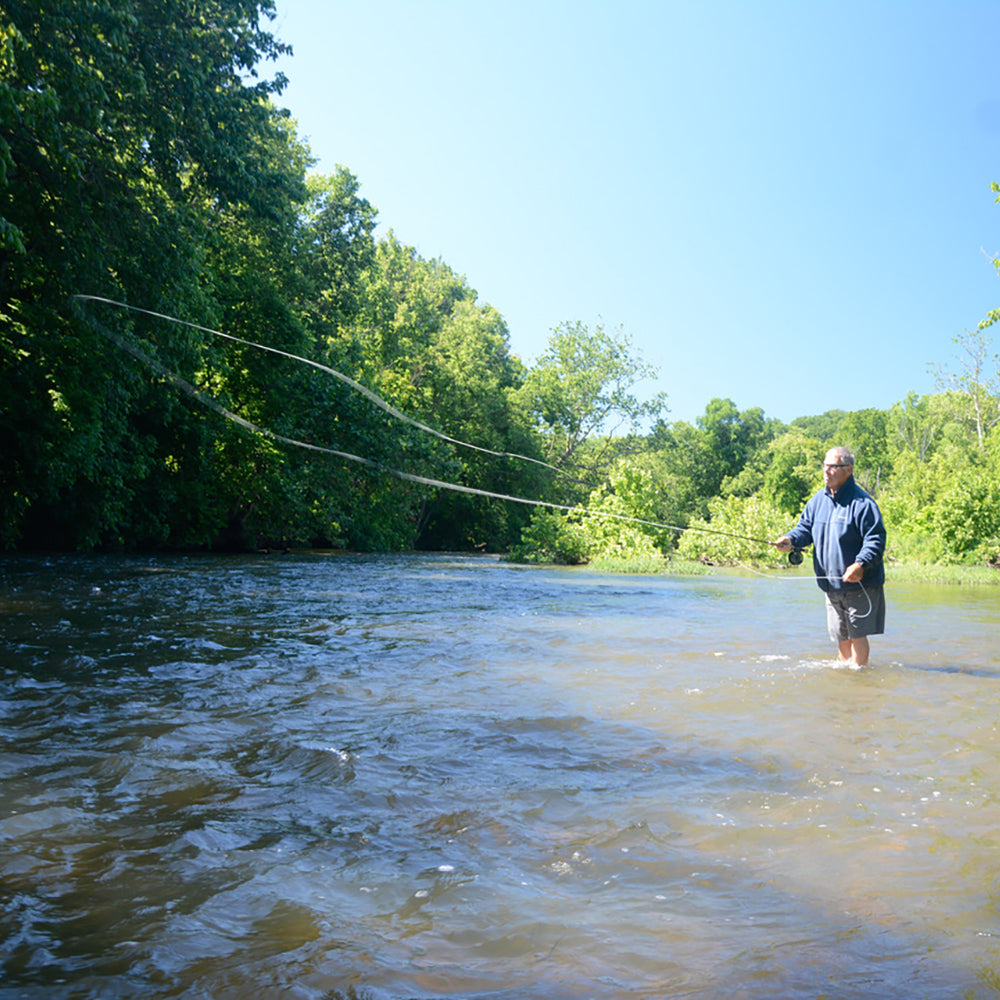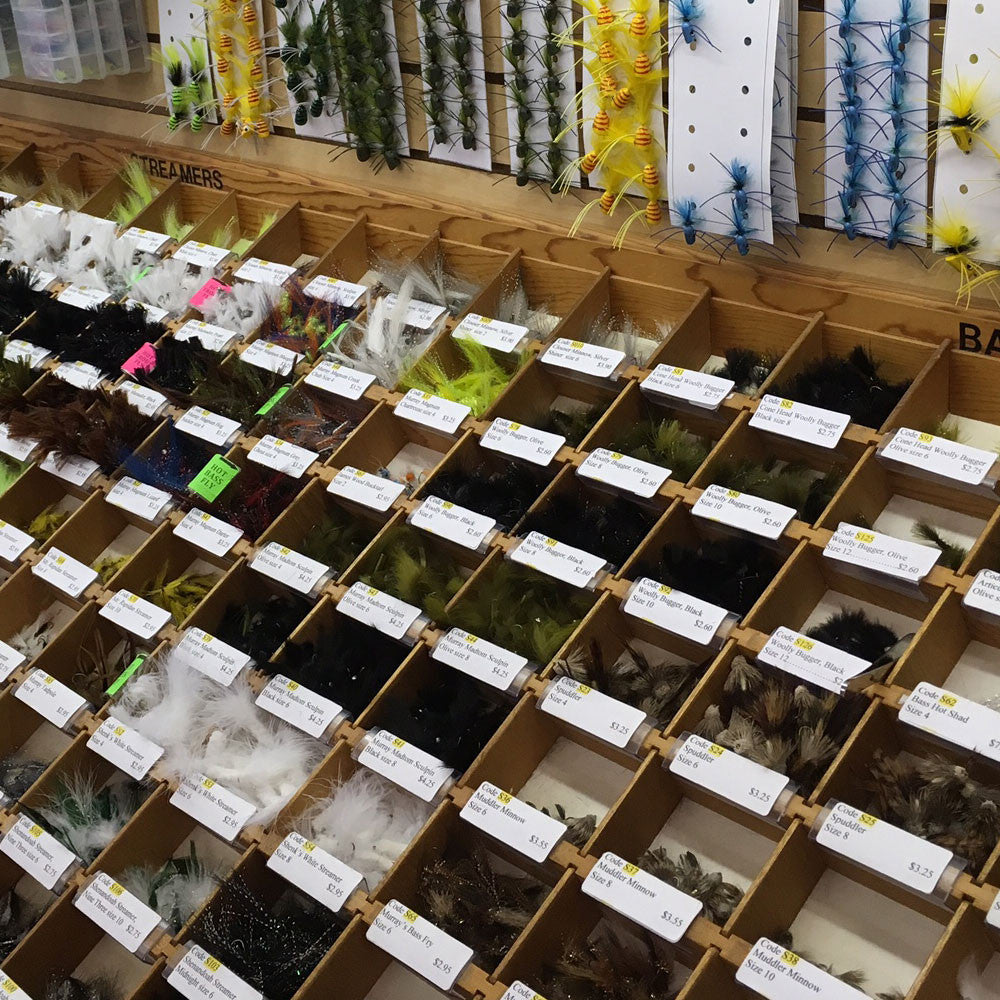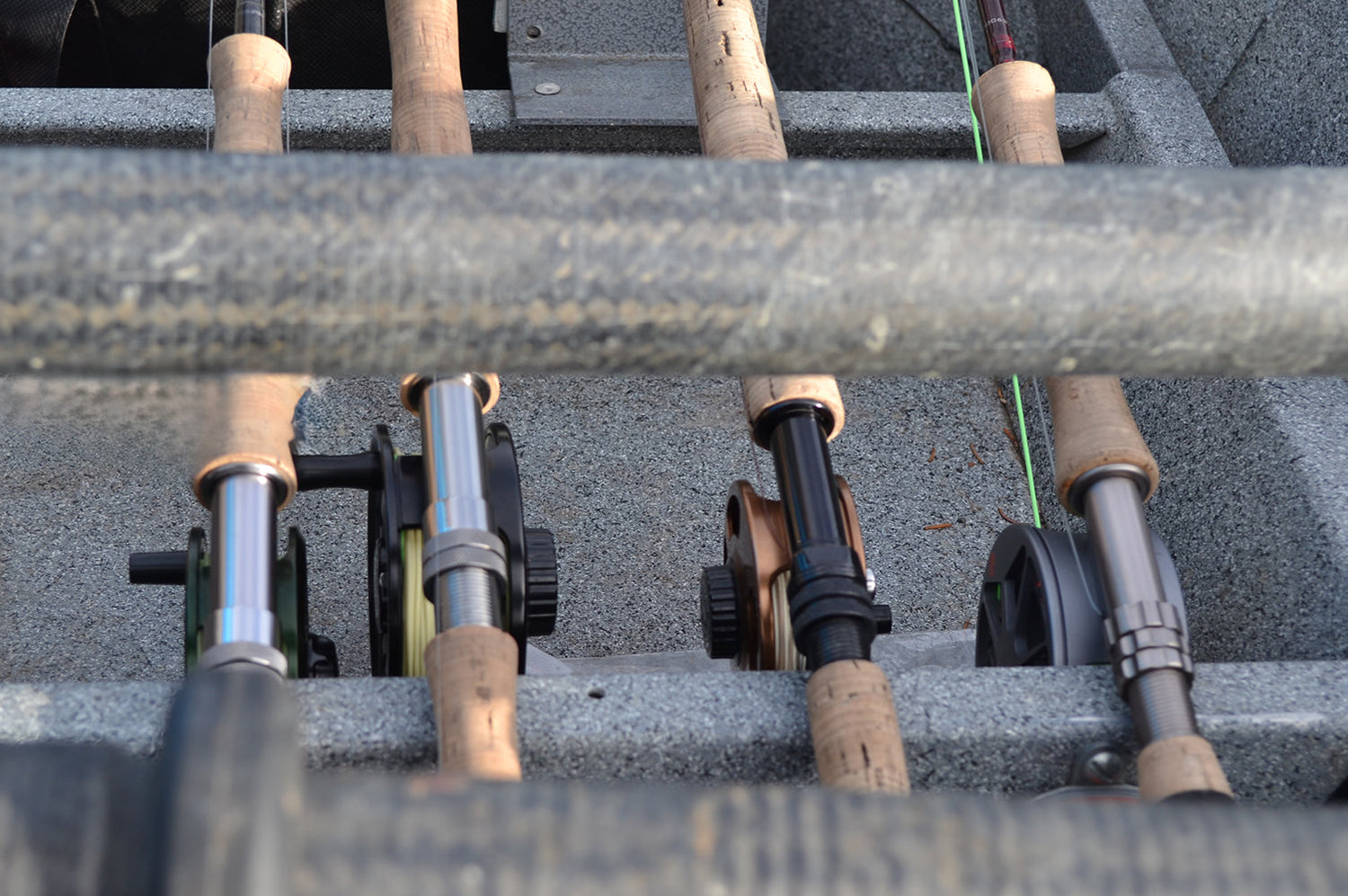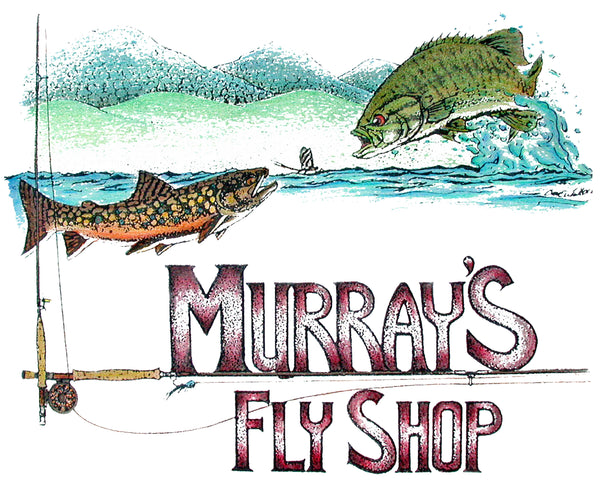My Three Favorite Surface Bass Bugs

Surface bass bugs can be made of cork, rubber, plastic, balsa wood and many other materials. I actually believe the effectiveness of hard surface bugs is dependent upon the action we can produce with the bug. The cut of the bugs face and the shape of its body are the primary physical features governing the action we can produce with each bug.
In our On The Stream Smallmouth Bass Schools, which we conduct on the Shenandoah River, we teach the students where, when and how to use the various bugs in order to catch the large bass.
The Slider is designed with a long slim body and a pointed nose. The Shenandoah Sunfish Slider is a good example. This bug-design is capable of producing a gentle teasing bug-action when a louder action may actually scare the bass. For example, one stretch of the South Fork of the Shenandoah River there is a fifty yard stretch where the western side of the river is heavily covered with large oak trees that provide thick shade thirty feet out over the river from noon until dusk. The stream bottom is composed of cobblestones of softball size which the bass appear to like because of the abundance of food found here. The only drawback to this stretch of the river is the water is only slightly over two feet deep which means the bass which have feeding stations here are very wary. The way I compensate for this is to have a student put on a Shenandoah Sunfish Slider size 6 and wade slowly to within casting distance of the bank. The cast is made at a 10 degree angle down and across stream so the Slider lands close to the stream bank. Imparting a gentle upstream mending rod action that moves the bug only two or three inches produces a gentle teasing action that the bass cannot resist. By repeating this five times at ten second intervals you are showing your bug to many bass. Wading slowly downstream to pause every twenty feet and repeating this tactic will give you great action.

The Chugger has a fat body and a deeply cupped face. The Shenandoah Chartreuse Chugger size 6 is a good example of this bug. This is a noise maker and I go to it when I want to create a racket to prompt the bass to charge it. Long riffles which are flowing at a moderate rate which are two to four feet deep hold many bass which appear to be on the lookout for wounded minnows washing down the river. On a guide trip, we beached our Hyde Drift boat at the head of a long riffle and had the client put a Shenandoah Chartreuse Chugger size 6 on his Bright Butt 9ft 2X Leader. We had him cast 40 feet across stream at a 20 degree angle downstream. As soon as the Chugger landed on the stream he began a firm foot-long line hand strip every ten seconds to swim it across stream just like a wounded minnow. He continued this until the Chugger was within 20 feet of him and then picked it up and cast it back across stream at the same angle as we waded slowly down the side of the whole riffle. He caught many bass with this method. This is basically the same technique we use when fishing a Murray's Pearl Marauder Streamer or the Murray's Magnum Darter Streamer along the stream bottom to mimic these minnows except now we are trying to make our floating Chugger flip and flop along the surface of the river to act like dying and struggling minnows.
The five to six foot deep river banks and lake banks can also produce many large bass to the Chuggers which are fished with a great racket. A firm two foot long line hand strip every ten seconds usually does the job. The James River and the South Fork of the Shenandoah River in Virginia and many lakes in Ontario provide a wealth of this great bass fishing.

The Shenandoah Blue Popper with its up-sloping face and long smoothly tapered body is one of my most dependable hard bugs. The tails of the river pools at dusk seldom let me down. I wade into the upstream section of the riffle just below where the tail of the pool upstream falls over the edge of the riffle. I wade slowly into the pool above and fan my casts upstream and up and across stream to cover all of the water within reach. I continue this method as I wade slowly upstream until I reach water which is too deep to wade. A very effective bug-action is a foot long line hand strip-pause-strip action every 10 seconds which moves the bug just slightly faster than the current is pushing it. The design of the Shenandoah Blue Popper in sizes 4 and 6 is such that it gives us the option of fishing it with a slow teasing action similar to the slider or with a loud splashy action similar to the Chugger. By experimenting with various bug actions I usually get my best fishing of the day in the tails of the pools at dusk. One word of caution: when you first start using this method you may be surprised how far away you can see the wake of bass coming to take your Shenandoah Blue Popper. Just use some restraint and don't set the hook until the bass takes your bug.
The design of the Shenandoah Popper enables me to have great success with it around aquatic grassbeds.
Many rock ledges extend across the rivers perpendicular to the flow of the current. Frequently there are breaks in these ledges 20 to 30 feet wide allowing the force of the current to rush through. Years of the current pushing through these breaks in the ledges has deposited sand and silt along the downstream sides of the ledges which permits thick aquatic grassbeds. These grassbeds grow right up against the ledges, extending downstram about 5 feet and reach 20 to 30 feet out on each side of the break in the ledge. They are loaded with damselfly nymphs, dragonfly nymphs and shiner minnows. Since this water is only 2 to 3 feet deep it is ideal for fishing with the Shenandoah Popper. Frequently the bass will grab the popper just seconds after it lands on the stream. If not, a slow pop-pause-pop bug action to fish the bug out 5 feet usually brings a solid strike. I fish both sides of the breaks in the ledge and frequently the action is so good that I devote an hour to fishing each of these areas.
As you can see hard head surface bugs are very effective for bass. The Slider with it long tapered body and pointed nose is great when you want to produce a teasing action. The Chugger with its fat body and deeply cupped face can produce a loud splashing racket on the surface that brings violent strikes in deep and fast water. The Shenandoah Blue Popper with its up-sloping face and long tapered body is very useful in producing a broad variety of bug-actions in many types of waters throughout the season and is thus my favorite hard head bug.

-

Learn Fly Fishing at Murray’s Fly Shop: Classes, Workshops & Schools
Welcome to Murray’s Fly Shop – Your Fly Fishing Learning Hub At...
-

Featured Flies of the Month
Harry Murray's recommended fly list for this time of the year. (March...
-

Fly Fishing Rod Outfits
Fly Fishing Rod and Reel Outfits for Smallmouth Bass fly fishing, Trout...



